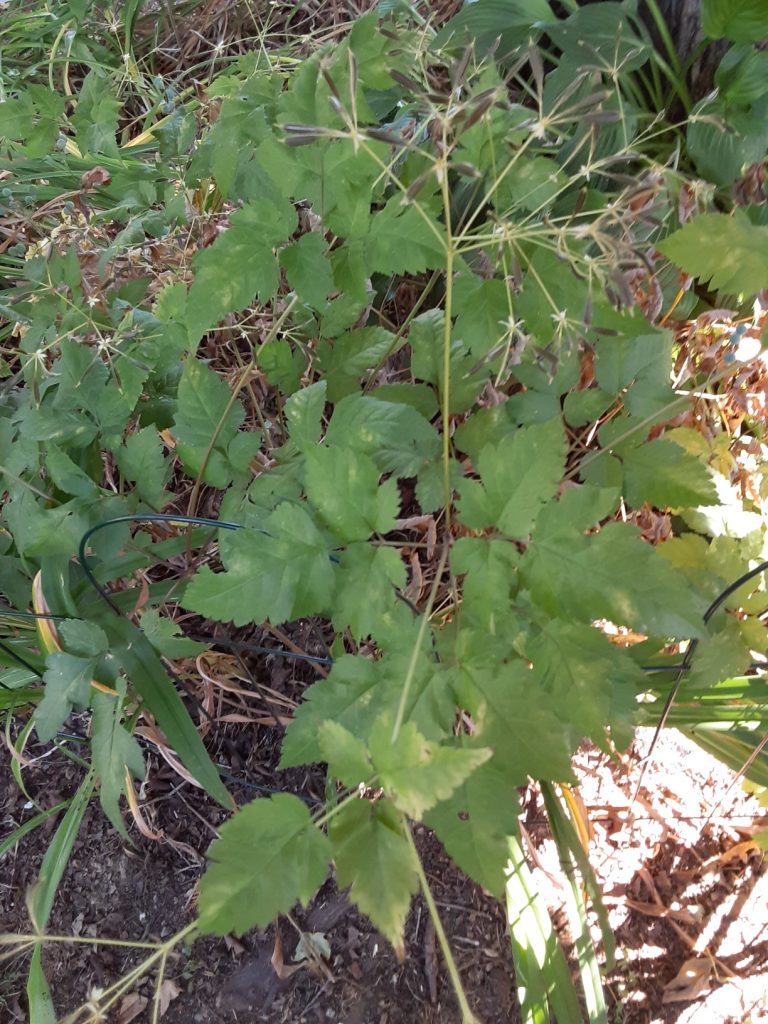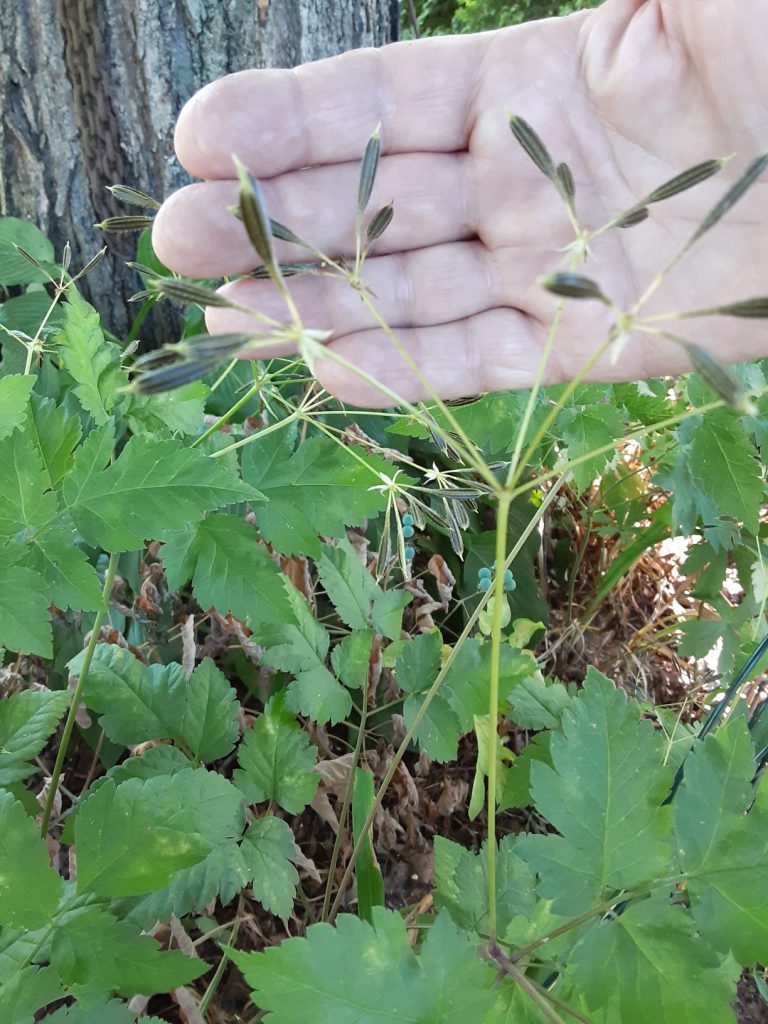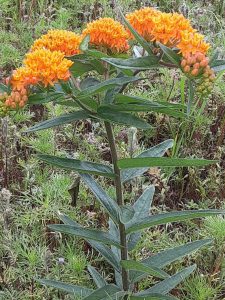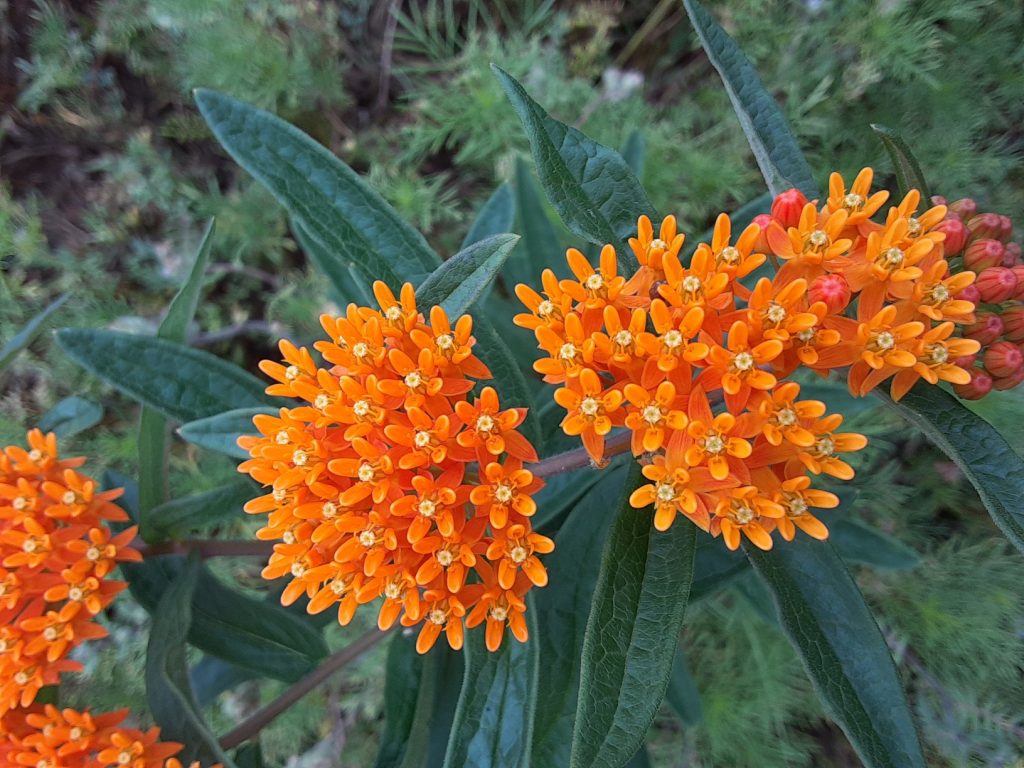By: Susan Sprout
Find out what’s underfoot with NPC member and environmental educator, Susan Sprout! Catch up on past issues of Underfoot: Introduction & Bloodroot, Trout Lily & Coltsfoot, Blue Cohosh & Dutchman’s Breeches, Ground Ivy & Forget-Me-Nots, Goldthread & Wild Ginger, Common Mullein & Sweet Woodruff
Aniseroot
Aniseroot is a member of the Parsley Family whose common name refers to its lovely “black jelly bean” scented root. Lacking sufficient sugar, colonial-era cooks used the chopped root to add sweetness to their pies and tart fruit recipes. Mmmm, yummy! The three-times compound leaves carry the scent as well as the seeds. People used to use the essential oil of the seeds as a furniture polish.

This plant is an early bloomer with sparse clusters of tiny five-petaled flowers that are long gone by now. Why do I tell about Aniseroot now?
It is all about the seeds! When this plant has mature seeds on it, the seed heads stand out at the top of the plant like antennae, waving their long, thin, canoe-shaped seeds to get your attention. That makes Aniseroot easily recognizable during the summer. Check them out when you walk through rich woods and along streams. Smell a crushed leaf for proof positive. A close relative, Sweet Cicely, is very similar in looks, but lacks scented leaves.


Butterfly Weed (or Pleurisy Root)
The root of this stunning native plant was once officially recognized as a medicine for pleurisy and included in the United States Pharmacopoeia. Its bright red-orange blossoms can be seen from summer into mid-fall; so look for a flash of its bright flowers out across a dry field or wild pasture. They really stand out. A member of the milkweed family, this plant may lack the gooey, white sap of its other relatives, but it sure does attract lots of butterflies!
Standing about three feet tall, its stiff, alternate leaves look like smooth spear points. The long, narrow pods that follow the flowers will split when dry to release many seeds carried on the wind by silky parachutes. Historically, cave dwellers in Arkansas, mound builders in Ohio, and Iroquois tribes of the northeast have all used butterfly weed stem fibers for making cords and other textiles. It has a wide distribution…must be the silky parachutes! Plant some in your garden. The butterflies will love you.

Susan Sprout is a retired school teacher who continued teaching after retirement at Montour Preserve helping teachers of handicapped students with nature walks, at the National Shell Museum as a curator of the fossil collection, and as teacher of Shell Studies at the local school on Sanibel Island. Based on her love and study of plants, she does living history presentations of medicinal plants used by Native Americans, colonial immigrants, and people living during the Civil War. Both she and her husband, Richard, serve as cannoneers with Thompson’s Independent Battery C PA Light Artillery. Sue has served on the Northcentral Pennsylvania Conservancy board in the past. The Sprouts have been Conservancy members for 29 years.

